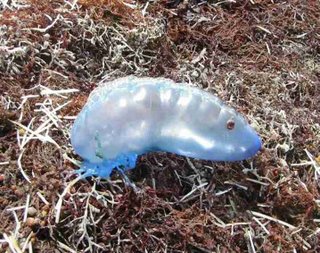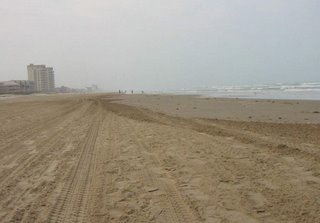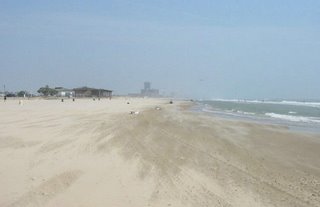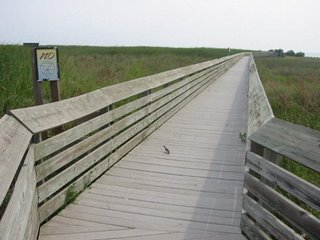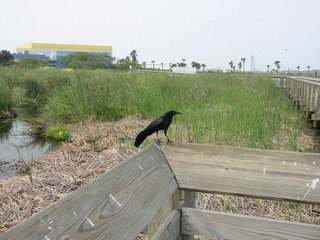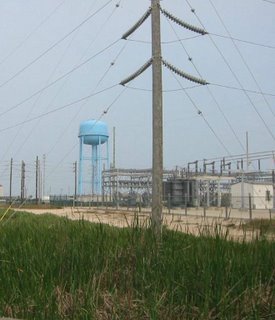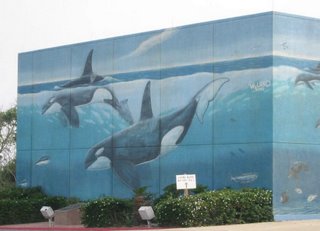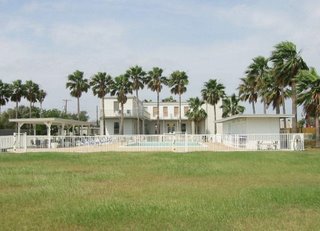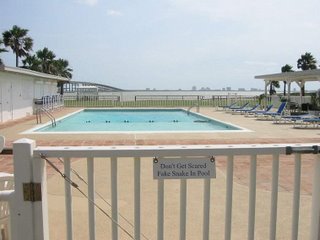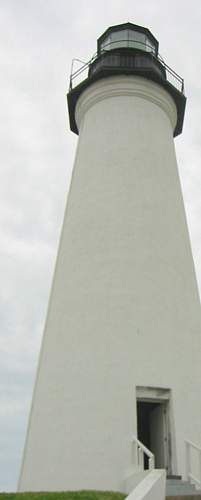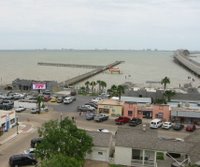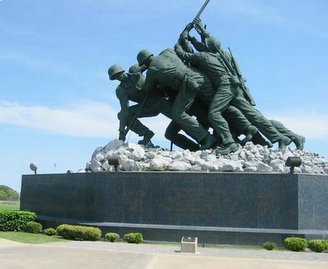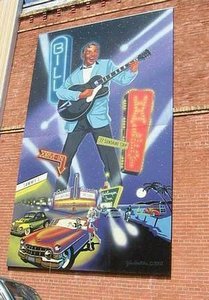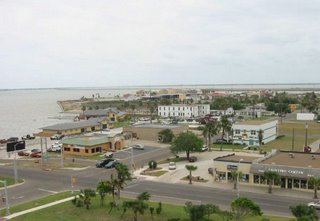
We're standing atop the Port Isabel Lighthouse looking out in a southeastern direction. South Padre Island is on the horizon and the body of water in view is the Laguna Madre. The white building in the center of the photo (closest to the water), is the Queen Isabel Inn, which was built in 1906.
If you wanted to take a ship and head out to the Gulf of Mexico, you would go in this general direction. At the far southern tip of South Padre Island is an opening called Brazos Santiago Pass, which would take you to the Gulf. While making your way through the pass, you would have South Padre Island to your left, and on your right would be Brazos Island. On Brazos Island was located Brazos Santiago.
In 1850, the U.S. Congress appropriated 15,000 dollars to go towards a lighthouse and beacon for the port at Brazos Santiago. Local authorities agreed that the lighthouse should be placed at Port Isabel and the beacon should be placed at the southern tip of South Padre Island.
The beacon, as it turned out, was a light mounted on a wooden structure, and the wooden structure rested on wheels. It went into service in August 1852, and in less than a year's time there were already complaints, one of which was that it burned too much oil. Around 1855, a new wooden structure was built and a new light was installed.
During the Civil War, the beacon's light was turned off, as was the case for all Texas lighthouses at this time. After the war, the light returned, but it shone from Brazos Island instead of South Padre Island. A temporary wooden structure three stories tall was placed there, and it was put into operation on August 24, 1864. This temporary structure was used for almost a decade until a hurricane blew it away in September of 1874. This storm also took the life of the lighthouse keeper's wife.
Another temporary light was set up to replace the former temporary light.
The Lighthouse Board thought it was time for a permanent lighthouse and suggested an iron lighthouse of the
screw-pile variety that would be placed in a shallow section of water at the southern end of South Padre Island. Congress gave the go-ahead, and the new
Brazos Santiago Lighthouse went into service on March 1, 1879. This lighthouse stayed in operation for sixty-one years. It was destroyed by fire on March 7, 1940. Shortly afterwards, a new beacon was placed on a nearby Coast Guard station.
Books:
Baker, T. Lindsay,
Lighthouses of Texas, College Station: Texas A&M University Press, 2001
Links:
- Check out the great photo of Brazos Santiago Pass that was taken using kite aerial photograpy! For more photos of the South Texas coast, check out the main site here.


